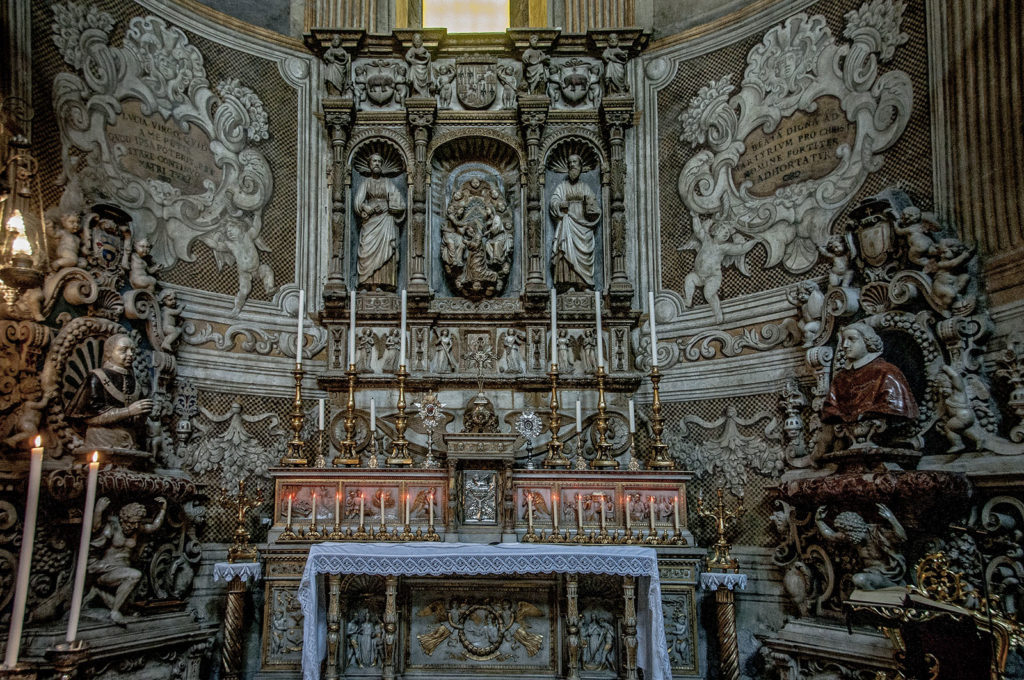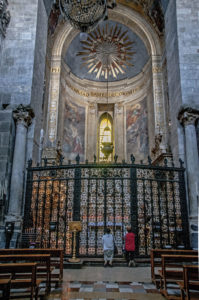The minor
apse
mof the right aisle is home to the highest concentration of votive artwork dedicated to
St. Agatha
.
The apse walls are completely frescoed and the floor is richly decorated. The wall decorations, gilding and all the decorative elements give the room a sense of triumphant theatricality.

Here we find the Retablo della Gloria di Sant’Agata (Retablo of the Glory of St. Agatha), the monument to Ferdinando d’Acuňa and the precious sacellum of St. Agatha.
The concept of scenography is found in these works. In fact, the retablo, a structure placed behind the altar, often focuses on events of the Passion of Christ, and served as a backdrop for the Holy Communion.


In the lower section some angels are depicted carrying the instruments of the crucifixion; in the centre we find the glorification of St. Agatha, or the same scene offered by Corradini in the fresco in the apsidal
vault
; and on the sides there are St. Peter and St. Paul, while the four evangelists are placed in the upper section. The golden portal guards a veritable
treasure
.
The sacellum is the place where the remains of the Catanese saint are still kept today, in a reliquary bust and various
anthropomorphic reliquaries
kept in the Casket.